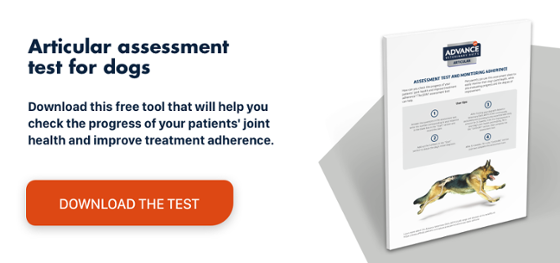Paw pad injuries in dogs: treatment and follow-up
Causes of paw pad injuries in dogs
Paw pad injuries in dogs are quite common and usually attributable to three main causes:
· Trauma injuries, when the dog cuts the pad by stepping on splinters, glass, metal spikes and other sharp objects. In these cases, the wound usually crosses the membrane, bleeds and is often quite deep. It usually requires stitches.
· Erosion. Paw pads can suffer erosion when dogs walk for a long time on hard, abrasive ground. For example, on volcanic rocks or stony beaches. The paw pad may bleed, but the wound is not usually very deep, although it may look very dirty.
· Burns. Burns can be caused by hot (walking on hot asphalt, for example) or cold surfaces (walking on icy or snowy ground).
Cracks that are neither deep nor bleed may be evident. In this case it is important to prevent aggravating the injury by keeping the dog from walking on ground that could cause further damage (e.g., hot asphalt, snow, ice, icy water, sharp gravel, construction waste and other potentially corrosive materials). Petroleum jelly should be applied, especially if the animal is going to continue walking on the same ground, as is the case with sled dogs or hunting dogs.
Treating paw pad injuries in dogs
Paw pad injuries should always be cleaned carefully, first with plenty of soap and water, then a saline solution should be used and for all subsequent occasions. It is very important to ensure that no particles remain inside the wound.
For deep wounds, the need for stitches to facilitate correct healing should be considered. Some wounds also require the application of an antibiotic cream.
Either way, after cleaning the wound must be covered and the paw pad protected so it can heal. Recovery will be slow, as the pad tissue does not heal easily, and the area is also continually exposed to abrasion and pressure. Besides the bandages, the paw should be covered with a protective boot or sock and, if necessary, protected from the dog’s attempt to remove it using an Elizabethan collar.
Conservative management is the usual option, even in cases where the wound is particularly severe. Veterinary surgeons from the Faculty of Veterinary Medicine at the University of Thessaloniki, Greece, presented the clinical case (1) of a dog that had completely lost one of its paw pads. They chose to let it heal by secondary intention, applying an oral antibiotic treatment, regular irrigation, bandages and limited exercise. Once the injury had fully healed, the animal never showed signs of limping again.
Possible complications
Despite the above, it is important to monitor this type of injury continuously and the possibility of debridement and drainage should always be considered if infection is suspected, as should antibiotic treatments which could prove more effective.
If not treated properly, the injury to the sole or pad in infected dogs may lead to the development of cellulitis and osteomyelitis which could become chronic. If osteomyelitis develops, in the medium term it can cause fractures in the phalanges and dislocations (2). In some cases, amputation might even become necessary.
Paw pad injuries in dogs are commonplace and often benign wounds that require only conservative treatment. However, they can be hard to heal given their location in very sensitive areas for the animal. It is therefore of the utmost importance to pay paw pad injuries their due attention to prevent them from developing into more severe problems.

